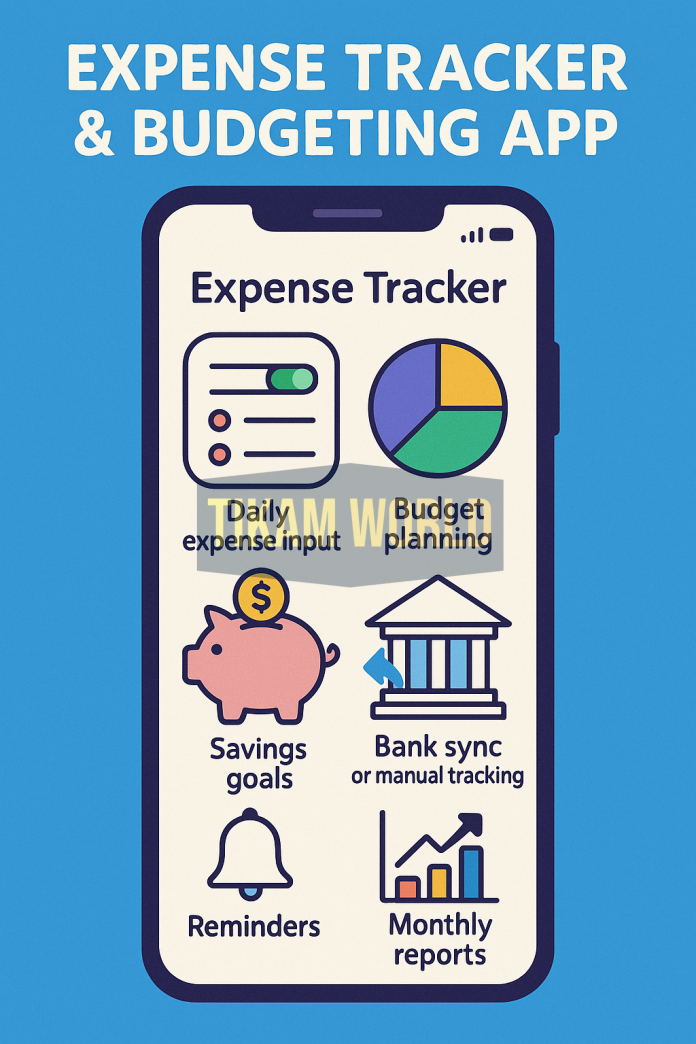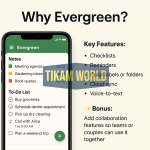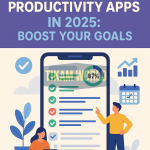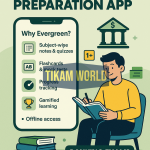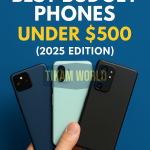Master Your Finances: The Ultimate Guide to Expense Tracker & Budgeting Apps in 2025
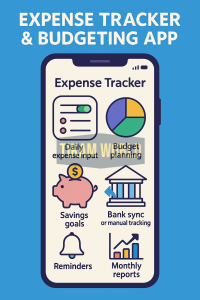
Managing money in today’s fast-paced world can feel like juggling flaming torches while riding a unicycle. Between bills, subscriptions, impulse buys, and long-term savings goals, keeping track of your finances is no small feat. Enter expense tracker and budgeting apps—digital tools designed to simplify your financial life, help you save smarter, and achieve your goals without the stress. In this comprehensive guide, we’ll dive deep into what these apps are, why they’re essential, how they work, and which ones stand out in 2025. Whether you’re a budgeting newbie or a finance guru, this article will help you find the perfect app to take control of your money.
What Are Expense Tracker & Budgeting Apps?
Expense tracker and budgeting apps are mobile or web-based tools that help you monitor your income, track spending, and plan your budget. They act like a personal financial assistant, categorizing your expenses, providing insights into your spending habits, and helping you set realistic savings goals. These apps sync with your bank accounts, credit cards, or manual inputs to give you a real-time view of your financial health.
Unlike traditional spreadsheets or pen-and-paper methods, these apps use automation, AI-driven insights, and user-friendly interfaces to make money management accessible to everyone. From tracking your morning coffee habit to planning for a dream vacation, these apps empower you to make informed financial decisions.
Why You Need an Expense Tracker & Budgeting App in 2025
In 2025, financial management is more critical than ever. With rising costs, unpredictable economic shifts, and an ever-growing number of subscription services, staying on top of your finances can feel overwhelming. Here’s why an expense tracker and budgeting app is a game-changer:
- Real-Time Tracking: Instantly see where your money is going, from groceries to streaming services.
- Goal Setting: Plan for big purchases, debt repayment, or retirement with clear, achievable goals.
- Spending Insights: Identify patterns, like overspending on dining out, and adjust habits.
- Automation: Sync with bank accounts to eliminate manual entry and reduce errors.
- Financial Freedom: Build savings, reduce debt, and gain peace of mind.
Using an app isn’t just about tracking—it’s about transforming your relationship with money.
Key Features to Look for in an Expense Tracker & Budgeting App
Not all budgeting apps are created equal. To find the right one, focus on these must-have features:
1. Bank Account Integration
Top apps securely connect to your bank accounts and credit cards, pulling in transactions automatically. Look for apps with robust encryption, like YNAB (You Need A Budget) or Mint, to ensure your data stays safe.
2. Customizable Budget Categories
A good app lets you tailor categories to your lifestyle—think “Pet Supplies” or “Freelance Income.” Apps like PocketGuard shine here, offering flexibility to match your unique needs.
3. Goal Tracking
Whether it’s saving for a new car or paying off student loans, goal-tracking features keep you motivated. Simplifi by Quicken excels at helping users set and monitor financial goals.
4. Reports and Analytics
Visual charts and spending reports help you understand your habits. Apps like Personal Capital provide in-depth analytics for both budgeting and investing.
5. Bill Payment Reminders
Never miss a bill again with apps that send alerts for upcoming payments, like Truebill (now Rocket Money).
6. Multi-Platform Access
The best apps work seamlessly across mobile, desktop, and tablet. Check for cross-platform compatibility to manage your finances anywhere.
7. Security Features
Look for apps with bank-level encryption, two-factor authentication, and transparent privacy policies to protect your sensitive data.
Top Expense Tracker & Budgeting Apps in 2025: Comparison Table
To help you choose the best app, here’s a detailed comparison of the top five expense tracker and budgeting apps in 2025:
| App | Price | Key Features | Best For | Platforms | Security |
|---|---|---|---|---|---|
| YNAB | $14.99/month or $99/year | Goal tracking, manual transaction entry, debt payoff tools | Budgeting enthusiasts | iOS, Android, Web | Bank-level encryption, 2FA |
| Mint | Free (with ads) | Automatic transaction syncing, budget alerts, credit score tracking | Beginners, free option seekers | iOS, Android, Web | 256-bit encryption, multi-factor |
| PocketGuard | Free or $7.99/month (Plus) | “In My Pocket” feature, customizable categories, bill tracking | Simple budgeting, overspend control | iOS, Android | AES-256 encryption |
| Simplifi by Quicken | $5.99/month | Spending plans, goal tracking, detailed reports | Goal-oriented users | iOS, Android, Web | 256-bit encryption, secure sync |
| Rocket Money | Free or $4-$12/month (Premium) | Subscription management, bill negotiation, savings automation | Subscription-heavy users | iOS, Android | Bank-grade security, 2FA |
How to Choose the Right Expense Tracker & Budgeting App
With so many options, picking the right app depends on your financial goals, lifestyle, and preferences. Here’s a step-by-step guide to make the decision easier:
- Define Your Goals: Are you saving for a house, paying off debt, or just trying to spend less? Apps like YNAB are great for debt repayment, while Simplifi is ideal for long-term savings.
- Consider Your Budget: If you’re looking for a free option, Mint or PocketGuard’s free tier might suffice. For advanced features, YNAB or Rocket Money’s premium plans are worth the investment.
- Evaluate Ease of Use: Beginners might prefer Mint’s intuitive interface, while tech-savvy users might enjoy YNAB’s hands-on approach.
- Check Compatibility: Ensure the app works on your devices and integrates with your bank.
- Prioritize Security: Always verify the app’s security measures to protect your financial data.
How Expense Tracker & Budgeting Apps Work
Most apps follow a simple process to help you manage your money:
- Connect Your Accounts: Link your bank accounts, credit cards, or investment accounts securely.
- Track Transactions: The app automatically categorizes transactions (e.g., “Groceries” or “Utilities”) or lets you input them manually.
- Set a Budget: Create a budget based on your income and expenses, with customizable categories.
- Monitor Spending: Get real-time updates on your spending, with alerts for overspending or upcoming bills.
- Analyze and Adjust: Use reports and insights to tweak your budget and habits for better financial health.
For example, apps like Mint use AI to categorize transactions, while YNAB encourages manual input for greater awareness. Both approaches work—it’s about what suits your style.
Benefits of Using an Expense Tracker & Budgeting App
Using a budgeting app isn’t just about tracking dollars and cents—it’s about building a healthier financial future. Here are the top benefits:
- Save Time: Automation reduces the need for manual tracking.
- Reduce Stress: Clear insights into your finances eliminate guesswork.
- Avoid Debt: Spot overspending early to stay within your means.
- Achieve Goals: Track progress toward big purchases or debt freedom.
- Improve Financial Literacy: Learn about your habits and make smarter choices.
Tips for Maximizing Your Budgeting App Experience
To get the most out of your app, follow these tips:
- Review Regularly: Check your app weekly to stay on top of your spending.
- Set Realistic Goals: Start with small, achievable savings targets to build momentum.
- Use Alerts: Enable notifications for bill payments and budget limits.
- Sync All Accounts: Connect all relevant accounts for a complete financial picture.
- Explore Features: Dive into reports, goal trackers, and other tools to fully leverage the app.
Common Mistakes to Avoid When Using Budgeting Apps
Even the best apps won’t work if you fall into these traps:
- Ignoring Manual Reviews: Relying solely on automation can miss errors in categorization.
- Setting Unrealistic Budgets: Overly strict budgets lead to frustration and abandonment.
- Neglecting Security: Always use strong passwords and enable two-factor authentication.
- Skipping Updates: Regularly update the app to access new features and security patches.
- Not Checking Reports: Failing to review insights means missing opportunities to improve.
The Future of Expense Tracker & Budgeting Apps in 2025
In 2025, budgeting apps are evolving with cutting-edge technology. Expect these trends to shape the future:
- AI-Powered Insights: Apps will use AI to predict spending patterns and suggest savings strategies.
- Cryptocurrency Integration: As crypto gains traction, apps like Personal Capital are adding crypto tracking.
- Subscription Management: With subscription overload, apps like Rocket Money focus on canceling unused services.
- Gamification: Apps are making budgeting fun with rewards and challenges to keep users engaged.
- Voice Assistants: Voice-activated budgeting, like asking your app to check your balance, is on the rise.
FAQs About Expense Tracker & Budgeting Apps
1. Are expense tracker apps safe to use?
Yes, reputable apps use bank-level encryption and two-factor authentication to protect your data. Always check the app’s privacy policy and security features before signing up.
2. Can I use a budgeting app without linking my bank account?
Yes, many apps, like YNAB, allow manual transaction entry if you prefer not to sync accounts.
3. Are free budgeting apps worth it?
Free apps like Mint and PocketGuard offer robust features for basic budgeting. However, premium plans often unlock advanced tools like goal tracking and bill negotiation.
4. How do budgeting apps help with debt repayment?
Apps like YNAB and Simplifi let you allocate funds specifically for debt repayment, track progress, and prioritize high-interest debts.
5. Can I use these apps for business finances?
Some apps, like Personal Capital, support small business budgeting, but dedicated tools like QuickBooks may be better for complex business needs.
6. How often should I check my budgeting app?
Weekly check-ins are ideal to review spending, adjust budgets, and stay on track with goals.
Conclusion
Expense tracker and budgeting apps are more than just tools—they’re your ticket to financial clarity and control. By automating tracking, providing actionable insights, and helping you set achievable goals, these apps make managing money easier and more effective. Whether you choose the hands-on approach of YNAB, the simplicity of Mint, or the subscription-savvy Rocket Money, there’s an app to fit your needs in 2025. Start exploring today, and take the first step toward a stress-free financial future.

